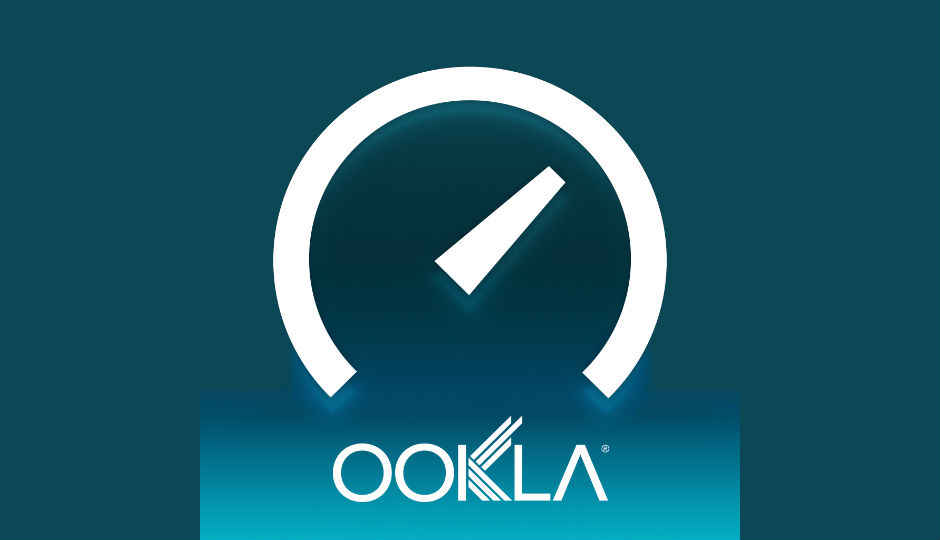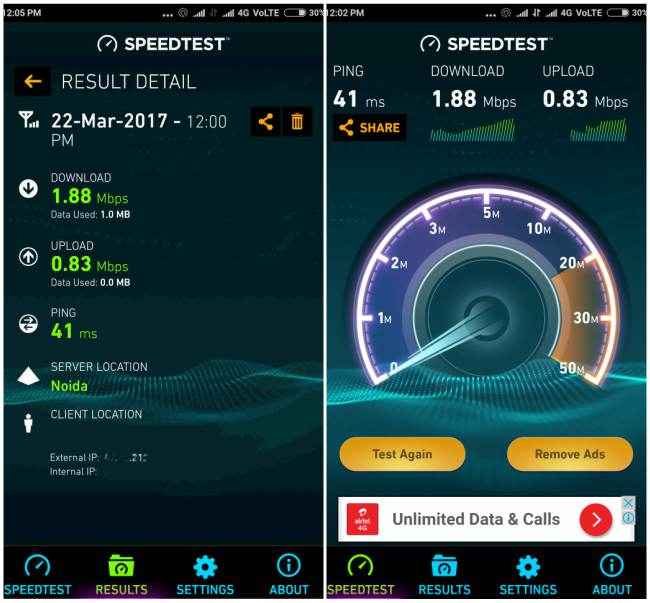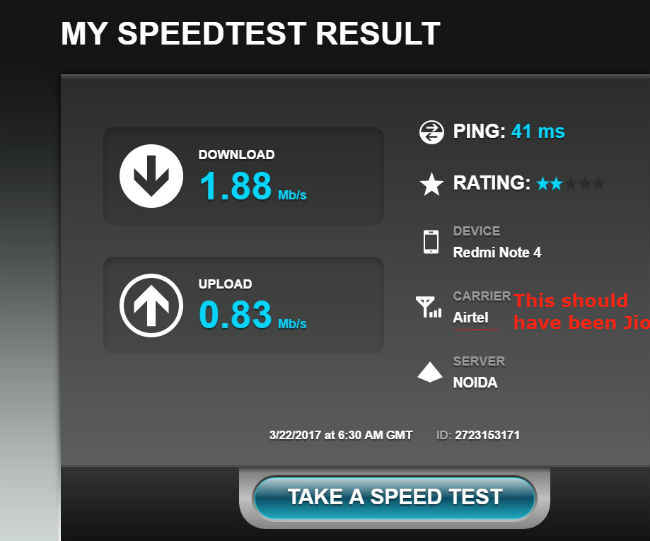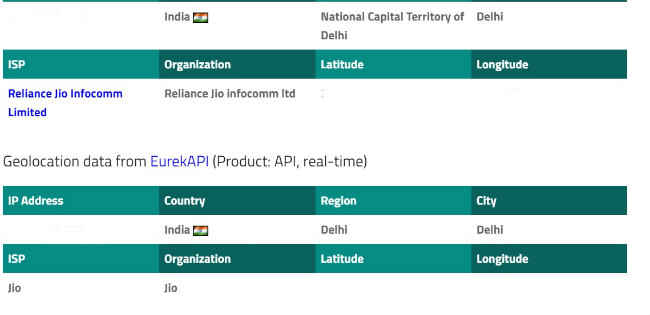Reliance Jio Vs Airtel: Here is why Ookla speed test results could be accurate

Speedtest service Ookla may just have been right in deeming Bharti Airtel as the fastest network in India. Here's how we put Ookla's claim to test.
UPDATE: Following is a statement released by Reliance Jio in response to Ookla's clarification of its testing process:
“With reference to the issue of the fundamental flaw in Ookla’s Speedtest methodology which Jio has pointed out repeatedly, we note that Ookla has now admitted to ‘limitations’ in its application, and that it “does not always indicate the actual data provider in devices with multiple SIMs.” This admission by Ookla reinforces Jio’s submission that there is a clear contamination in primary data collected by Ookla in India, where nearly 90 percent of smartphones are dual SIM devices. Any results that are based on incorrect and contaminated primary data cannot be definitive, only probabilistic. It is a travesty that such results are being passed off as “official” results by a market-leading operator. We will continue to expose such misleading practices and raise it at suitable forums.”
The battle between Reliance Jio and Airtel has heated up at the back of the disputed network speed test results by Ookla, which deemed Airtel as the fastest network in Q3 and Q4 of 2016. The controversy caused quite a stir in the telecom space yesterday. In a press statement, Ookla stood its ground and reaffirmed its decision of bestowing the title of India’s fastest network to Airtel.
To give you some context, Reliance Jio had alleged that Ookla’s speed test methodology is flawed as the service does not account for tests done on SIM 2 of a dual-SIM device. Jio claims Ookla informed the company that it attributed test results to mobile country code/network code of the device “which is always that of the SIM in the primary SIM slot in a dual SIM phone, even if the SIM used for testing the speed is the SIM in the secondary SIM slot.”
To this, Ookla replied by saying, “The carrier displayed in the Speedtest Android application is based on the “Active Carrier” value returned by the device. Due to limitations of the Android platform, the “Active Carrier” does not always indicate the actual data provider in devices with multiple SIMs. In these situations, Ookla applies additional data sources and mechanisms during post-processing to help determine the actual data carrier being tested. For example, Ookla matches the connection IP address recorded during the test to known carrier IP blocks. This enables Ookla to determine the actual data carrier with a high degree of confidence. Airtel’s margin of victory increased when the complete analysis was performed.”
Putting this to test, we took a dual-SIM phone with an Airtel SIM in SIM Slot 1 and a Jio SIM in the secondary SIM slot. We then set the smartphone to use the Jio SIM for internet and the Airtel SIM for calls only. After this, we ran a speed test using the Ookla Speedtest app, the results of which proved Reliance Jio’s claims that the carrier displayed is still that of SIM slot 1, even when the speed test is conducted using a SIM in the secondary SIM slot. Below is an image of the shared test result.

Ookla App results
IP addresses blurred for security reasons

Ookla App results showing wrong mobile carrier
However, as per Ookla, the company uses the connection’s IP address to determine the carrier while post-processing their test results. This, according to the company, is one of the many methods it uses to determine the actual carrier. So, we put that to test as well.
The speed test that is generated by the Ookla app also carries an “External IP” address. We took that address and cross-referenced it with any one of the free online IP search tools, in this case, iplocation.net. See Image below

Results from IPlocation.net
IP addresses blurred for security reasons
As you can see, The IP location search clearly points out the ISP as Reliance Jio Infocomm, the SIM that was used to test network speed. If Ookla did indeed use this method to determine the actual mobile carrier of all speed tests conducted by users, it would, as it said, be in a position to determine the fastest carrier accurately. While Ookla’s initial speed test results display the wrong carrier in the test report, the company does have a way of determining the real mobile carrier using the IP address of the connection.




